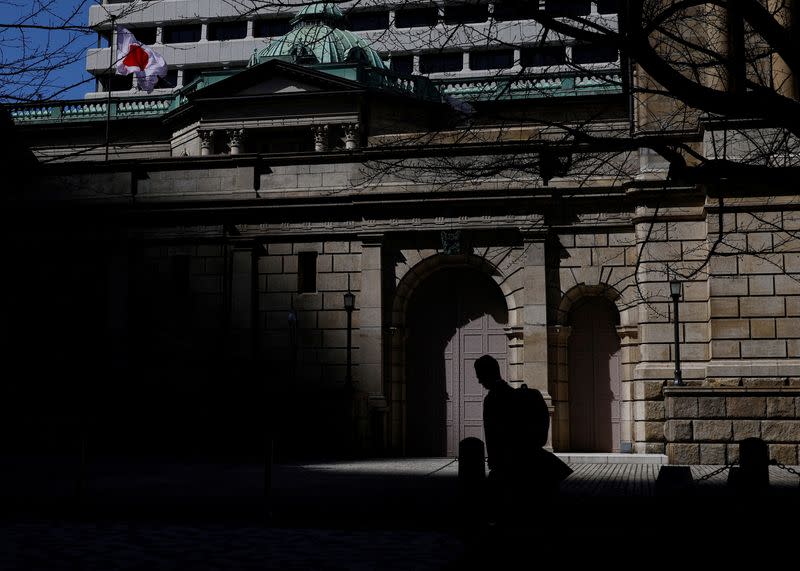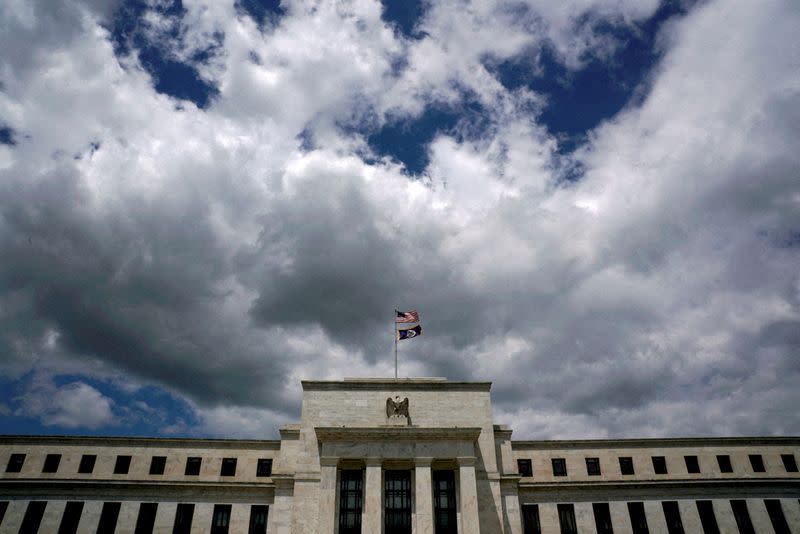BOJ joins a rate-hike party that other big central banks have left
By Naomi Rovnick and Alun John
LONDON (Reuters) - Global interest rates are in flux. The Bank of Japan, a holdout dove as central banks across the developed world raised borrowing costs from late 2021, finally called time on its easy money era on Tuesday.
Most other big central banks, in contrast, are on the brink of victory in their fight against inflation.
Rate setters in the United States, Britain, Switzerland and Norway meet this week and may at least offer clues about when they will cut rates.
Here's how big central banks stand.
1) UNITED STATES -
Markets have pared back Federal Reserve rate cut bets given hawkish central bank speak and hotter than expected inflation.
Traders price in roughly 75 basis points (bps) of U.S. rate cuts in 2024 versus 150 bps at the start of the year, with a first move seen as most likely in June.
The Fed, which meets on March 19-20, has held rates steady at 5.25% to 5.5% since July 2023.
2) NEW ZEALAND -
Reserve Bank of New Zealand deputy governor Christian Hawkesby told Reuters this month that interest rates, at a 15-year high of 5.5%, need to stay restrictive for some time.
But the mood could shift before the RBNZ's next rate decision in April. Finance minister Nicola Willis warned last week that economic growth in coming years will be "significantly slower" than previously expected. High interest rates have already dampened economic activity.
3) BRITAIN -
The Bank of England is one to watch. Traders, swaps markets and positioning data broadly expect it to ease rates later than the Fed and the ECB.
But economists reckon inflation could tumble rapidly as wage growth slows, prompting an early move. For now, money markets price the first BoE cut in August. Its next meeting is Thursday.
4) CANADA -
The Bank of Canada's next rate decision is due on April 10 with the central bank widely expected to keep its key overnight rate steady at a multi-decade high.
Markets see the BoC cutting by around 60 bps this year with the highest chance of the first cut in July.
5) EURO ZONE
The ECB kept borrowing costs at record highs this month, but took a first, small step towards lowering them, saying inflation was easing faster than it had anticipated a few months ago.
Markets are pricing 84 bps of cuts this year, with a 57% probability of the first cut coming in June, an outlook some ECB policymakers appear aligned with.
But the market's expectations for euro zone rate cuts could shift based on what may happen in the United States. By cutting before the Fed, the ECB risks a bout of euro weakness that may re-stoke inflation.
6) NORWAY -
Norway could be a late mover on rate cuts. Inflation numbers for February were clearly below the Norges Bank's estimates but seen as unlikely to alter the central bank's position on March 21.
Norges Bank kept its benchmark rate unchanged at 4.50% in January and said the cost of borrowing could stay at that level "for some time ahead".
7) AUSTRALIA -
The Reserve Bank of Australia held rates steady on Tuesday at a 12-year high of 4.35% but softened its stance by dropping a warning about further hikes that had appeared in previous monetary policy statements.
Expectations for the first rate cut were fully priced into swaps markets for September.
8) SWEDEN -
Sweden's central bank, which left its key rate steady at 4% in February, said it might be able to bring forward the timing of a first rate cut if inflation continues to slow.
The Riksbank makes its next rate decision on March 26. Economists see the first round of easing in May or June.
9) SWITZERLAND -
A fall in Swiss inflation to its lowest level in nearly two and half years in February has fuelled expectations that the Swiss National Bank could cut rates when it meets on Thursday.
Traders anticipate the first full rate cut in June, however, according to money market pricing.
10) JAPAN -
The Bank of Japan on Tuesday ended eight years of negative interest rates. As well as bringing interest rates up to a range of 0-0.1%, the BOJ also abandoned yield curve control, where it purchased vast amounts of Japanese government bonds to cap state borrowing costs.
With inflation exceeding the BoJ's target for over a year, a shift had been expected in March or April. Still, the moves were a mark of confidence from the BoJ that Japan has finally emerged
from the grip of deflation.
(Reporting by Naomi Rovnick and Alun John. Graphics by Kripa Jayaram, Pasit Kongkunakornkul, Riddhima Talwani, Sumanta Sen and Vineet Sachdev; Editing by Dhara Ranasinghe and Ros Russell)


